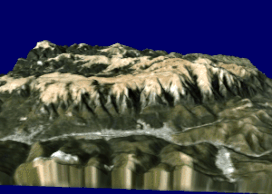Bucegi Mountains
| Bucegi Mountains | |
|---|---|
 |
|
| Highest point | |
| Peak | Moldoveanu (peak) |
| Elevation | 2,544 m (8,346 ft) |
| Coordinates | 45°26′44″N 25°27′22″E / 45.44556°N 25.45611°ECoordinates: 45°26′44″N 25°27′22″E / 45.44556°N 25.45611°E |
| Dimensions | |
| Area | 300 km2 (120 sq mi) |
| Geography | |
| Country | Romania |
| Counties | Dâmbovița, Prahova and Brașov |
| Geology | |
| Orogeny | Alpine |
| Age of rock | Neogene |
The Bucegi Mountains (Romanian: Munții Bucegi [ˈmunt͡sij buˈt͡ʃed͡ʒʲ]; are located in central Romania, south of the city Brașov. They are part of the Southern Carpathians group of the Carpathian Mountains.
To the east, the Bucegi Mountains have a very steep slope towards the popular tourist destination Prahova Valley (a.o. Bușteni and Sinaia). At a higher elevation is the Bucegi Plateau, where wind and rain have turned the rocks into spectacular figures such as the Sphinx and Babele.
The Bucegi is believed to be the Dacian holy mountain Kogainon, on which the God Zalmoxis resided in a cave.
The exact origin of the name "Bucegi" is disputed by philologists. "Buceag" or "bugeac" seems to be the source of the name, a word designating in the language of mountain people both the moss in the forest and the wilderness or the junipers. Archaic version of the name "Bucegi" is "Buceci", name still used today by elders in the mountains, and about which linguists say it's derived from "huceag", "buceag" or "bugeac".
Linguist Sextil Pușcariu claims that the name of Bucșoi, one of the mountains that reach the Omu Peak, derives from "Buc", "Bucur", just as "Buceci", "Bugeci" derives from "Buc" with the same suffix like "Măneciu" or "Moeciu". And "Bucur" is a genuine Dacian name. In Iorgu Iordan's work, Toponimia romînească, the name of the mountains is derived from Slavic , meaning "beech".
...
Wikipedia

